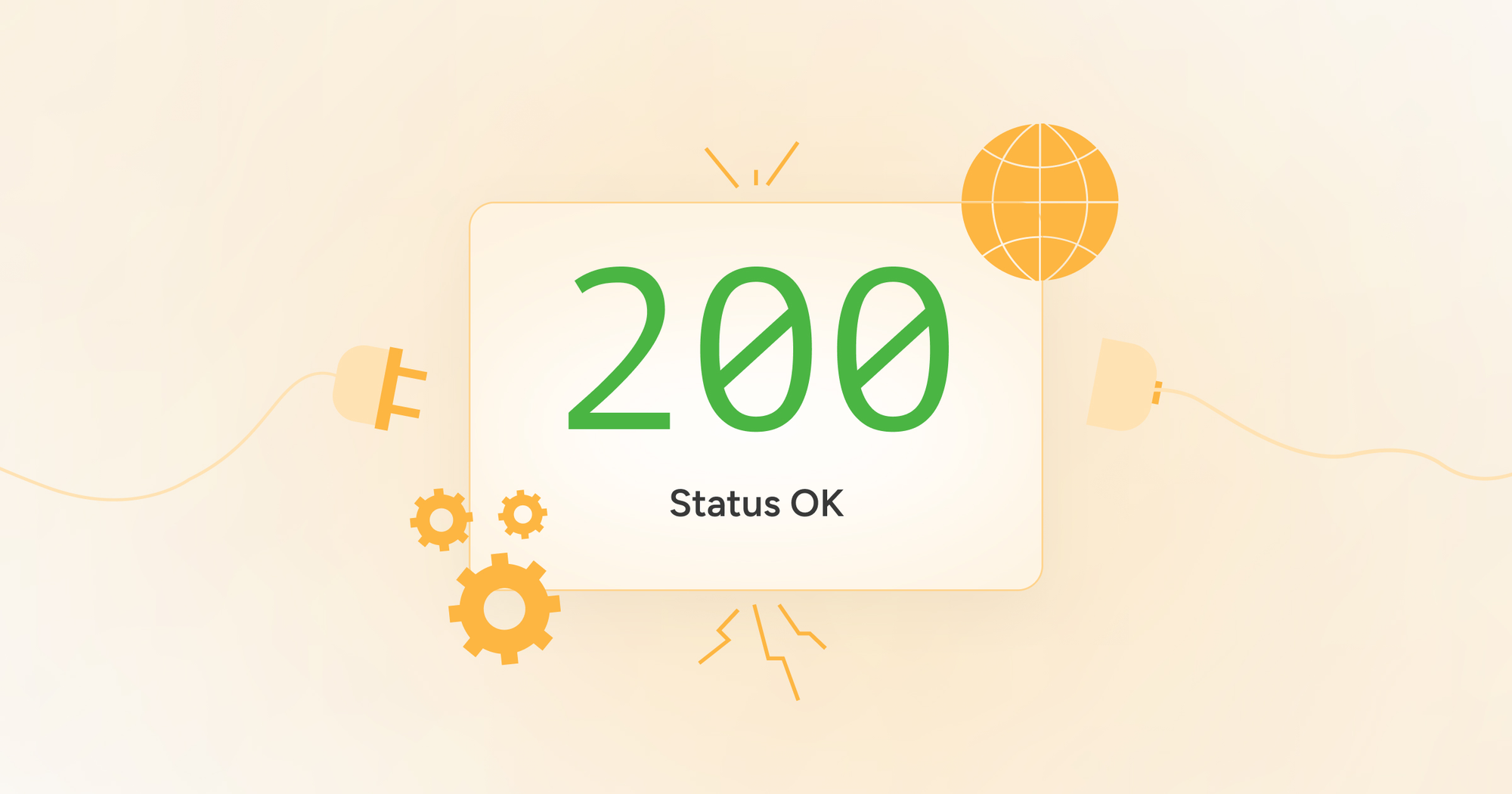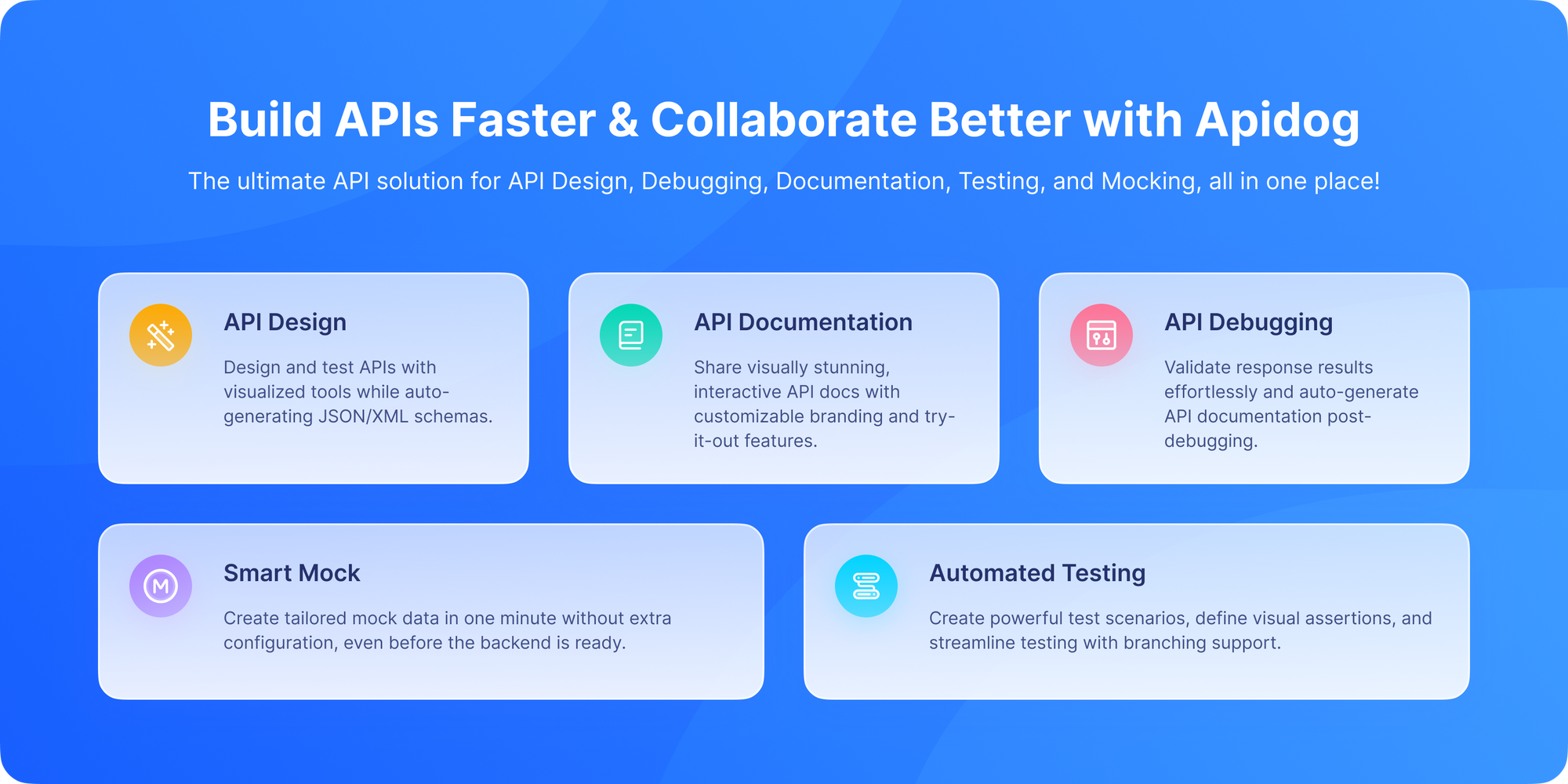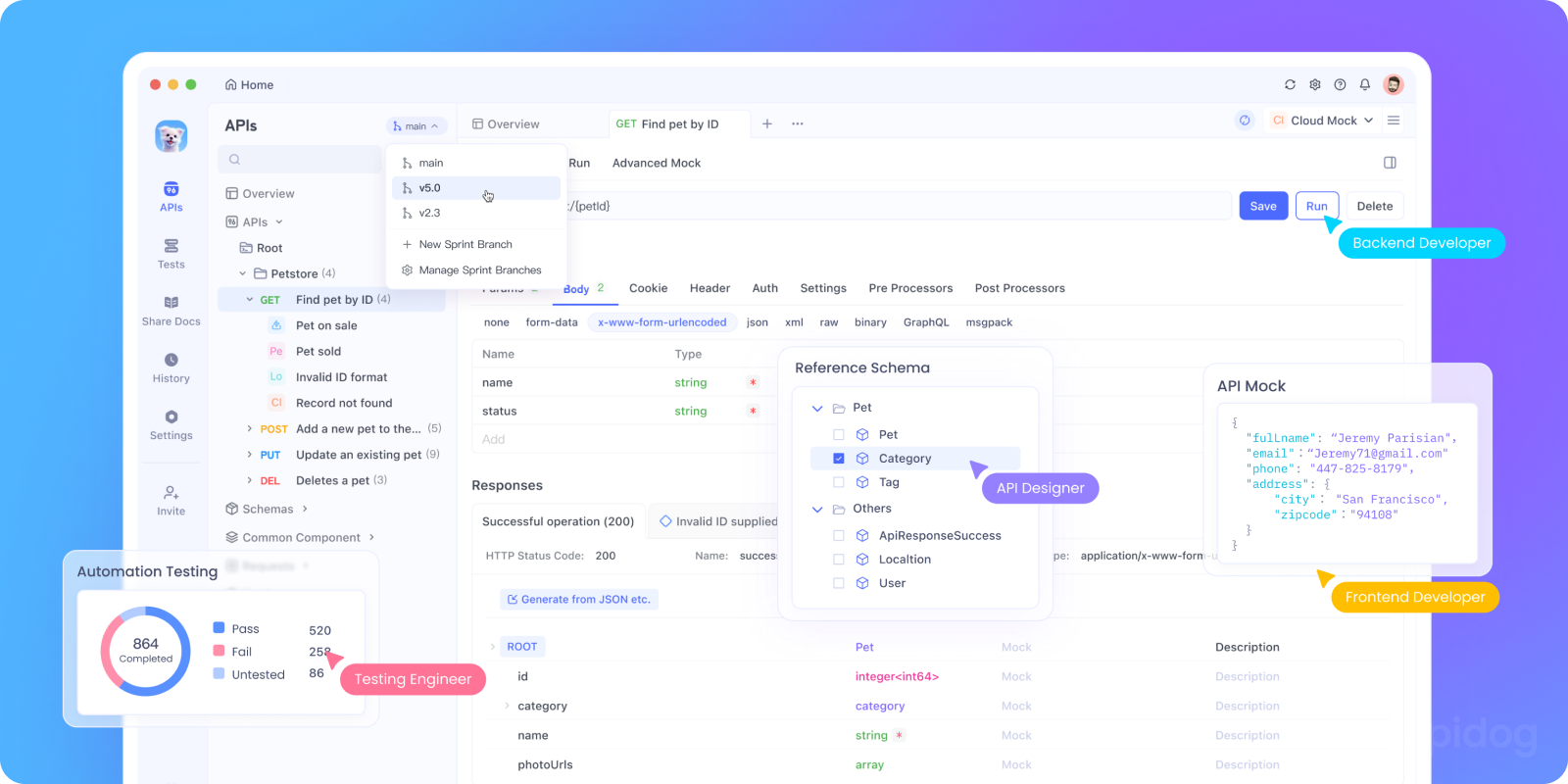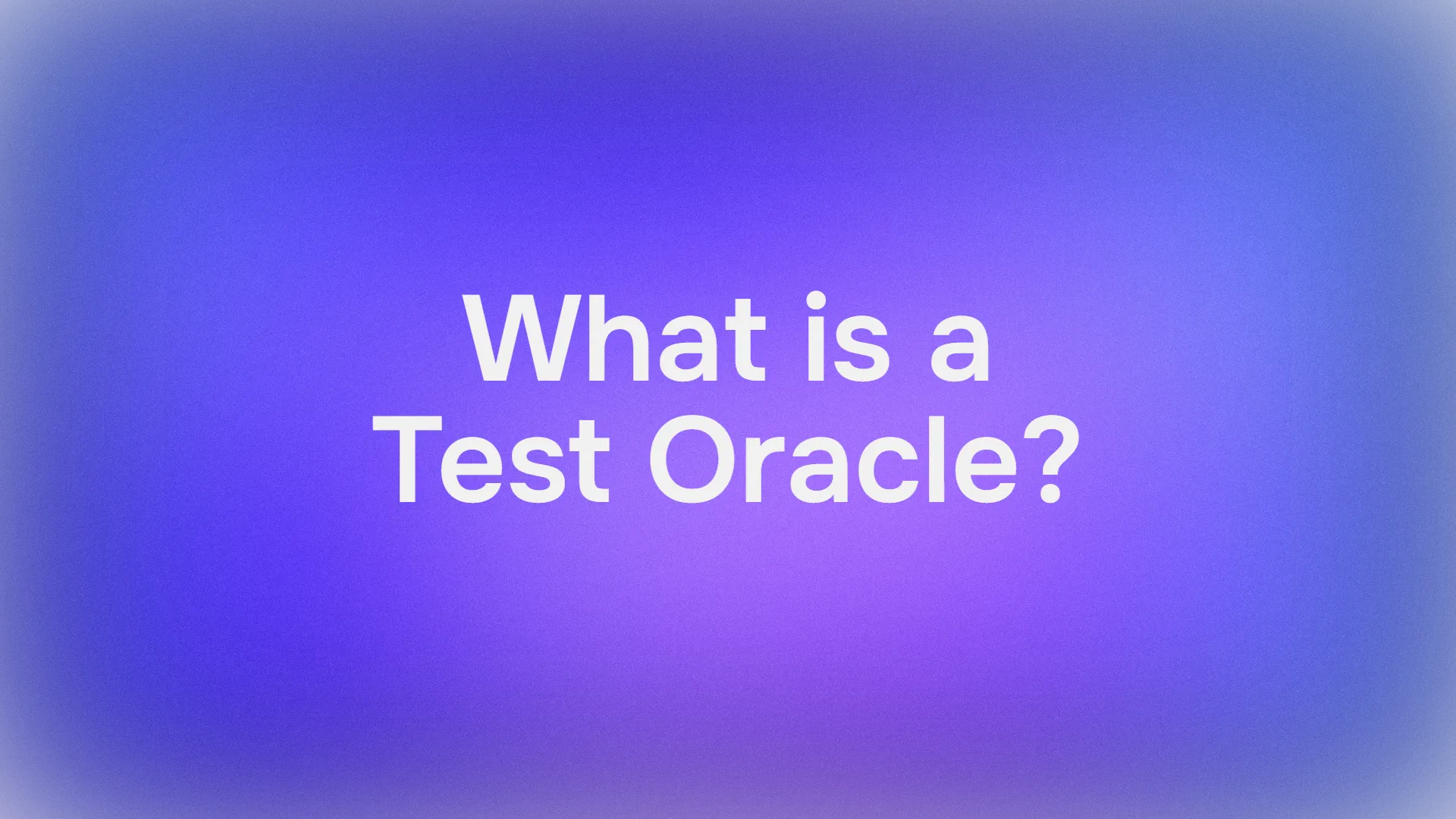If you've ever built, tested, or debugged an API or web application, chances are you've seen the HTTP status code 200, also known simply as "200 OK". more times than you can count. You know that feeling when you send a text and you get that little "Delivered" receipt? Or when you click a link and the page loads instantly, showing you exactly what you were looking for? There's a quiet, subconscious sigh of relief. Things are working as they should.
In the vast, interconnected world of the internet, the HTTP 200 status code is that "Delivered" receipt. It's the universal thumbs-up, the digital high-five, the silent workhorse that tells you everything is A-OK. It's the code of success, the signal of a promise kept between a client and a server. It's one of the most common codes in the HTTP response family, and it usually means everything is working just fine.
But here's the thing, just because you see 200 OK doesn't always mean your application is behaving exactly as intended. There's more to this little code than meets the eye.
But have you ever stopped to think about what's really happening when you see that 200? It seems simple on the surface, but like most things in technology, the devil and the genius are in the details. What does it actually mean? How does it work? Why is it so important? And how does it fit into the bigger picture of how the web and APIs work?
In this blog post, we’ll explore everything you need to know about HTTP 200. Whether you’re a developer, a digital marketer, or just curious about the web, this guide will help you understand why the 200 OK response is like a virtual thumbs-up from the server. If you need a tool that speaks their language fluently. Discover how Apidog, a fantastic free API testing tool, can help you interact with and debug APIs that return 200 status codes safely and effectively. With Apidog, you can effortlessly send requests, inspect responses, and verify that you're getting the correct 200 OKs you expect, along with the right data. It's the perfect companion for understanding the concepts we're about to discuss.
Now, let's pull back the curtain on the most important status code on the web.
Want an integrated, All-in-One platform for your Developer Team to work together with maximum productivity?
Apidog delivers all your demands, and replaces Postman at a much more affordable price!
What is an HTTP Status Code 200?

First things first, let's set the stage. At its core, HTTP status code 200 means "OK" or "Success". It tells you that the client's request was received, understood, and processed successfully by the server. When your web browser (which is called the client) wants to talk to a website's server, it uses a language called HTTP, or Hypertext Transfer Protocol. It's a set of rules for how these conversations should happen.
Imagine HTTP as the grammar for a request-response conversation:
- The Request: You type a URL into your browser and hit enter. Your browser writes a neatly formatted "request" letter. This letter says things like "GET /blog/post-1 HTTP/1.1" ("Please get me the blog post called 'post-1'") and includes headers like your preferred language and what kind of browser you're using.
- The Response: The server receives this letter. It goes and finds (or generates) the requested resource, puts it in an envelope, and writes a "response" letter to send back. The very first line of that response letter is the HTTP status line.
And the status line looks like this:
HTTP/1.1 200 OK
That three-digit number is the HTTP status code. It's the server's quick, efficient way of summarizing the entire result of the request before you even see the data. The accompanying reason phrase ("OK") is a human-readable description that we developers like to have, but programs primarily care about the number.
These codes are grouped into classes by their first digit:
- 1xx (Informational): "Hold on, I'm working on it."
- 2xx (Success): "You asked for it, and here it is!" This is 200's family.
- 3xx (Redirection): "You need to look over there instead."
- 4xx (Client Error): "You messed up the request."
- 5xx (Server Error): "I messed up handling your request."
The 200 status code is the patriarch of the 2xx family, the most straightforward symbol of success. It’s one of the most positive messages in the HTTP world, showing that your interaction with the server happened without issues.
In simple words: 200 is the green light of the internet.
Difference Between 200 and Other 2xx Codes
Here’s where it gets interesting. Not all 2xx codes are the same. While 200 is the general-purpose success code, other 2xx codes can be more semantically precise for certain actions:
- 200 OK: The general workhorse. Perfect for
GETrequests where you are returning the requested resource. Also fine forPOSTorPUTrequests where you are returning the updated resource. - 201 Created: Specifically for when a
POSTrequest successfully creates a new resource. The response should ideally include aLocationheader pointing to the URL of the new resource. (e.g.,POST /api/userscreates a new user and returns201 Created). - 202 Accepted: Used when the request has been accepted for processing, but the processing hasn't been completed. This is common for asynchronous operations. (e.g., "We've received your request to generate a report; check back at this URL later.").
- 204 No Content: The server successfully processed the request but is not returning any content in the response body. This is perfect for
DELETErequests orPUTrequests where you're updating a resource but don't need to send the entire thing back to the client.
Using these more specific codes makes your API more expressive and self-documenting. So while 200 is the most common, it’s not the only way servers signal success.
Where You've Seen HTTP 200 (Everywhere)
You encounter 200 responses constantly, even if you don't see the code itself. Every time a web page loads correctly, an image appears, a video plays, or an API returns data to a mobile app, a 200 status code was almost certainly involved behind the scenes.
- Loading a Webpage: When you navigate to
https://www.example.com, the server responds with a200 OKand the HTML content for the homepage. - Fetching an Image: Your browser sends a request for
https://www.example.com/cat.jpg. The server responds with a200 OKand the binary data of the cat picture. - Using a Mobile App: When your social media app loads your feed, it's making an API call to a server (e.g.,
GET /api/feed). The server responds with a200 OKand a JSON object containing all the posts, which the app then renders beautifully on your screen. - Submitting a Form (Successfully): You fill out a contact form and hit "Submit." If everything is validated correctly, the server might process the data, save it to a database, and return a
200 OKwith a "Thank you for your message!" HTML page.
In essence, the 200 code is the foundation of a functional web. It's the expected, happy path for most web interactions.
Why Is HTTP 200 So Important?
HTTP 200 status code is the gold standard when it comes to success on the web. Whenever you see a 200 in response to your request, it means:
- The server understood your request (syntax, headers, etc. were correct).
- The server successfully processed the request (all backend work was done without errors).
- The server is sending back the requested data or confirmation (like the HTML of a webpage or JSON data from an API).
From a developer standpoint, the 200 OK is the signal to move forward with data processing in your app or website. Without it, you can’t be confident your request succeeded.
Why is 200 Considered “OK”?
The 200 OK response has been part of the HTTP standard since the beginning. It was designed as a universal indicator that:
- The request reached the server.
- The server processed it successfully.
- The response contains the requested data.
Think of it like ordering at a restaurant:
- You ask for a burger (the request).
- The kitchen receives your order, makes it, and sends it back (the server’s response).
- The waiter brings it to you and says, “Here’s your burger!” (status code 200).
The Role of HTTP in Communication
To fully understand 200, you need to know what HTTP (Hypertext Transfer Protocol) does. It’s the protocol that allows clients (browsers, apps, API clients) to talk to servers.
Every interaction follows the request-response model:
Client → Request (like GET, POST, PUT).
Server → Response (with a status code and data).
The status code is basically the server’s way of saying, “Here’s how things went.”
HTTP Status Code 200 and Different HTTP Methods
The meaning of HTTP 200 varies slightly based on the HTTP method you used:
| HTTP Method | What 200 OK Means |
|---|---|
| GET | The requested resource was found and returned in the response body. Example: downloading a webpage or API data. |
| POST | The server accepted the sent data and performed the intended action (like creating a new record). Some APIs might return 201 Created here instead. |
| PUT | An existing resource was updated successfully. |
| DELETE | The resource was deleted successfully with confirmation. |
| HEAD | Same as GET but returns only headers, no body. |
| OPTIONS | Lists supported HTTP methods and communication options. |
| TRACE | Returns the received request for diagnostic purposes. |
Why HTTP 200 is the Bedrock of API Design and Testing

For anyone working with APIs, understanding and correctly implementing 200 responses is non-negotiable. And thorough testing is important to verify that the successful responses include the correct data.
- Predictability and Contract: APIs are contracts. A
GETrequest to a/usersendpoint should reliably return a200 OKwith a list of users. This predictability allows frontend and backend teams to work independently. They agree on the "contract" (the response structure on a 200), and then each side can build against it. - Automation and Reliability: Scripts, cron jobs, and other services rely on status codes to know if they should proceed, retry, or alert someone. A script expecting a 200 will break if it gets a 200 with an error body, but it can easily handle a 400 or 500 code.
- Debugging: When something goes wrong, the status code is the first and most important clue. A
500 Internal Server Errorpoints you to the server code. A400 Bad Requestpoints you to the data being sent from the client. A200 OKtells you the HTTP layer is working, and any problem lies in the content of the response body.

This is where a comprehensive tool like Apidog becomes indispensable. It's built around these principles of contract-first development and clear communication. You can:
- Define the expected response structure for a 200.
- Easily test endpoints to ensure they return the correct status code and the correct body shape.
- Set up validation rules to automatically flag responses that return a 200 but with malformed JSON or missing fields.
- Document for your entire team what a successful response should look like, reducing ambiguity and bugs.
With Apidog, you don't have to guess whether a 200 response really means success. Automated checks give you confidence that your APIs aren't just returning 200, but also delivering accurate and reliable data. Instead of hoping your APIs work, you can verify they follow the contract—using the right HTTP status codes and correct responses every time. You can download Apidog for free and get started right away!
How Developers Should Interpret a 200 Response
When you see 200, ask yourself:
- Did I get the data I expected?
- Does the response structure match the API documentation?
- Is the payload correct, not just present?
Developers should treat 200 as a first check, but always verify the actual response content.
Common Misconceptions About HTTP 200
- 200 doesn't always mean 'content'. Some APIs return 200 OK with an empty body or with a message saying no data is available, which technically is still a success response.
- Some developers expect 201 Created when posting new data, but 200 OK is also allowed, simply meaning the server finished the request successfully.
- Sometimes, poorly designed APIs return 200 even on errors. This is bad practice but something to watch out for.
Troubleshooting When 200 Isn't Really "OK"
If everything looks like it's working (because you see 200), but things still feel off, here's what to do:
- Check response body: Make sure it contains the right data.
- Validate headers: Ensure
Content-Typematches what you expect. - Use monitoring tools: Track APIs over time to catch inconsistencies.
- Look for hidden errors: Sometimes apps log
200but display issues to the user.
Best Practices for Using and Handling HTTP 200
For Server-Side Developers (API Providers)
- Be Precise: Use the most specific 2xx code possible (
201,204). - Never Use 200 for Application Errors: Reserve 4xx and 5xx codes for errors. Don't hide failures in a 200 response body.
- Always Set Content-Type: Always include the
Content-Typeheader to tell the client how to parse the body.application/jsonis the standard for APIs. - Return Useful Data: For
POSTandPUTrequests, it's often helpful to return the created or modified resource in the response body on a 200/201. This saves the client from having to make an additionalGETrequest.
For Client-Side Developers (API Consumers)
- Always Check the Status Code First: Before you even look at the response body, your code should check if the status code is in the 2xx range.
- Don't Assume the Body: A 200 doesn't guarantee the body is what you expect. Handle parsing errors gracefully (e.g., if the JSON is invalid).
- Understand the Contract: Know what the API promises to return on a 200 for each endpoint.
The Future of HTTP and Response Codes
As web technology evolves, status codes remain a core communication method. HTTP/3 still uses them, and they'll be part of web development for the foreseeable future.
That said, developers may adopt even stricter practices around using the right codes, not just defaulting to 200. Tools like Apidog will play an increasing role in enforcing standards and consistency.
Summary: The Silent Guardian of the Web
So, what is HTTP status code 200?
It's the most common signal of success in the world of web communication. HTTP 200 OK isn't just a number. It's a foundational pillar in how the web communicates successfully. It's the foundation upon which trust on the web is built, the trust that when we click a link or send data, the system will work. It means the server understood and handled your request perfectly, allowing your applications to proceed with confidence. But as we've seen, while 200 OK tells you the request succeeded at a protocol level, it doesn't guarantee the response is semantically correct.
By interpreting 200 wisely, validating payloads, and using the right tools, you can avoid falling into the trap of thinking "200 means everything is fine." Whether you are building websites, APIs, or mobile applications, knowing how to interpret and handle 200 responses is crucial.
By understanding its nuances, respecting its role in the larger context of HTTP, and using tools like Apidog to ensure we're implementing it correctly, we build more robust, reliable, and understandable applications. So the next time you see a page load instantly or an app update seamlessly, remember the humble 200 OK, the unsung hero working behind the scenes to make it all happen.



